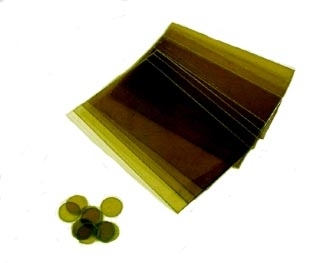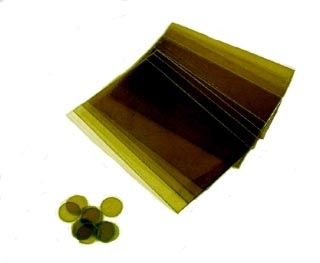Phlogopite Mica
|
Techniques for cleaving SPI mica sheets. |
Generally speaking, the kinds of people who use muscovite mica substrates (and look at them with microscopy) want very smooth surfaces. The mica mineral phlogopite, when it is cleaved, results in a rougher surface. The mineral also lacks the high optical clarify of muscovite, at least when talking about grades V-4 or better.
But there are some significant differences between the more familiar (to most) muscovite form of mica vs. the less familiar phlogopite form of mica.
For one thing, there is no equivalent to the "grading" scheme as there is for the muscovite form of mica since that scheme is based on optical clarify (which phlogopite clearly does not have) and the presence (or absence) of iron oxide and other inclusions, which phlogopite seems to not have at all. So while there are some differences in what one might call "quality", such differences have to be characterized and measured via a scheme entirely different than the one used for the characterization and grading of muscovite mica (e.g. V-1, V-2, etc.).
Appearance: Pale brown to brown, vitreous to pearly luster, transparent to translucent
Chemical formula: K Mg3 AlSi3 O10 (OH)2
Chemical name: Potassium magnesium aluminum silicate hydroxide
CAS #: 12001-26-2
Crystal system: Monoclinic, 2/m
Cleavage: Perfect in one direction producing thin sheets or flakes
Fracture: Not generally observed because of the cleavage properties
Specific gravity: 2.9+
Kuwahara, Yoshihiro. (2001). Physics and Chemistry of Minerals. 28. 1-8. 10.1007/s002690000126.


